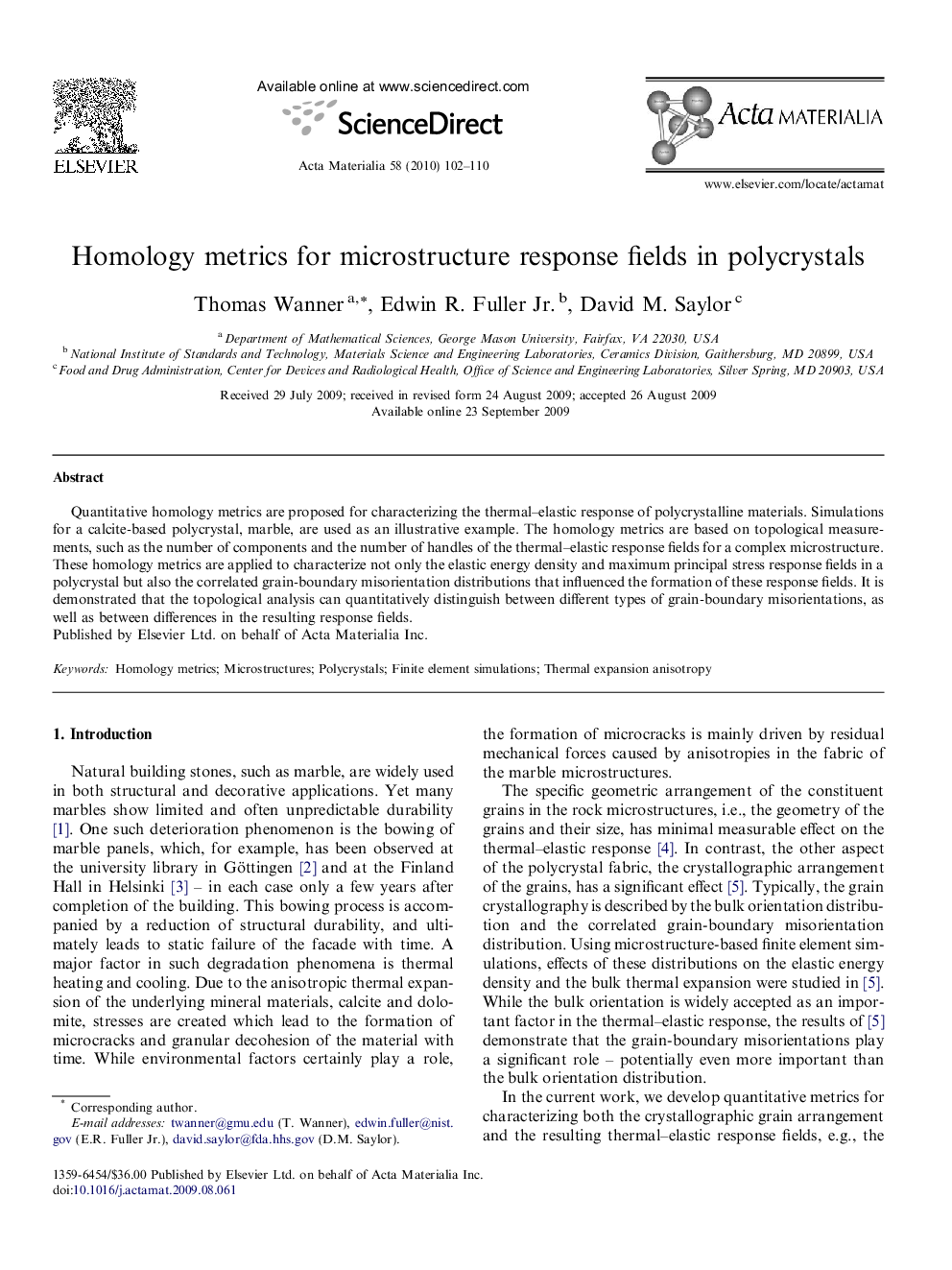| Article ID | Journal | Published Year | Pages | File Type |
|---|---|---|---|---|
| 1449103 | Acta Materialia | 2010 | 9 Pages |
Quantitative homology metrics are proposed for characterizing the thermal–elastic response of polycrystalline materials. Simulations for a calcite-based polycrystal, marble, are used as an illustrative example. The homology metrics are based on topological measurements, such as the number of components and the number of handles of the thermal–elastic response fields for a complex microstructure. These homology metrics are applied to characterize not only the elastic energy density and maximum principal stress response fields in a polycrystal but also the correlated grain-boundary misorientation distributions that influenced the formation of these response fields. It is demonstrated that the topological analysis can quantitatively distinguish between different types of grain-boundary misorientations, as well as between differences in the resulting response fields.
